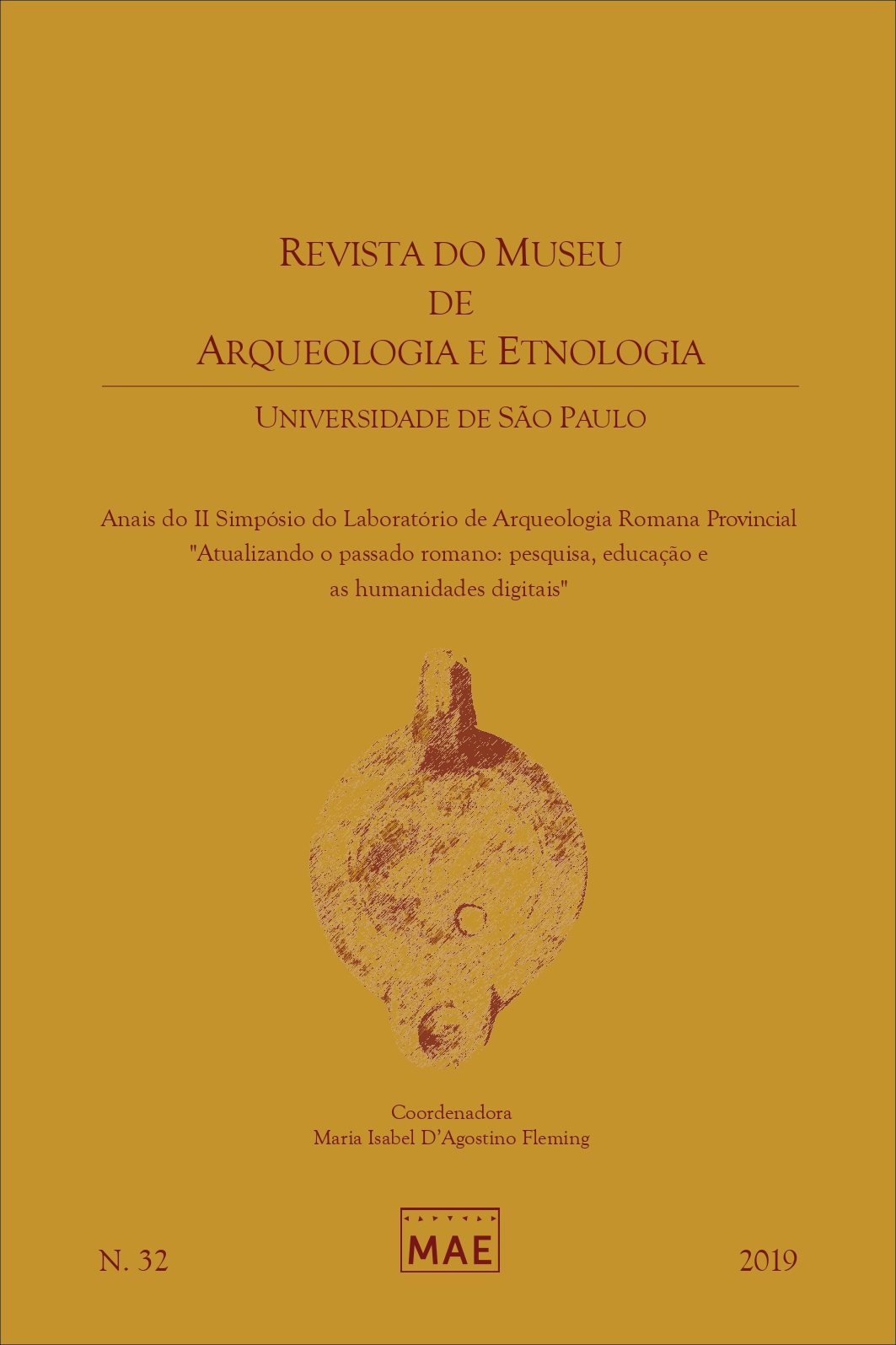Greek tradition, Roman innovation: baths in North Africa - the Egyptian case
DOI:
https://doi.org/10.11606/issn.2448-1750.revmae.2019.164235Keywords:
Roman provinces, Public bathing, Egypt, Cultural exchanges, IdentityAbstract
Among the various cultural practices brought to the provinces after the Roman conquest, baths figure prominently due to their long duration, the vast territory they cover on three continents, and the remarkable number of remains they’ve left behind. When compared against each other, the architectural features of this body of buildings exhibit a significant variability as we move through time and space. While the North-African provinces, which were strangers to public bathing practices before the Roman conquest, boast thermal complexes built according to the imperial model, monumental and symmetrical, in Egypt we contemplate a wholly different panorama. This discrepancy can be attributed to the influence of Greek bathing culture, firmly rooted in Egyptian soil throughout three hundred years of Ptolemaic rule after Alexander’s annexation in 331 BC. Egyptian baths display original features generated by local choices, and constitute an atypical case of regional model – in their plans, their dimensions, their bathing forms, and in the rejection, or partial and often belated adoption of new Roman techniques and architectural innovations, particularly heating by hypocaust.
Downloads
References
Boraik, El-Masek, T.; Piraud-Fournet, P. 2017. The Roman Baths at Karnak, Between River and Temples. In: Redon, B. (Ed.) Collective baths in Egypt. IFAO, Cairo, parte 2: 221-266.
Boussac, M-F.; Fournet, T.; Redon, B. (Eds.) 2009. Le bain collectif en Egypte, IFAO, Cairo.
Broise, H. 2009. Entre continuité et rupture, l’introduction des pratiques balnéaires grecques et romaines em Égypte. In: Boussac, M-F.; Fournet, T.; Redon, B. (Eds.) Le bain collectif en Égypte. IFAO, Cairo, Introdução: 9-15.
Castel, G. 2009. Le bain nord de Karanis. In: Boussac, M-F.; Fournet, T.; Redon, B. (Eds.) Le bain collectif en Égypte. IFAO, Cairo, parte 4: 229-245.
Charlesworth, D. 1970. The Tell el-Fara’hin Excavation, 1969, JEA, vol. 56: 19-28.
Fagan, G. 2013. Bathing in public in the Roman world. The University of Michigan Press, Ann Arbor.
Kołataj, W. 1992. ALEXANDRIE VI: Imperial baths at Kom el-Dikka. Centre d’Archéologie Méditerranéenne de l’Académie Polonaise des Sciences, Varsóvia.
Nielsen, I. 1993. Thermae et Balnea. The Architecture and Cultural History of Roman Public Baths. Aarhus University Press, Aarhus.
Redon, B. (Ed.) 2017. Collective baths in Egypt. IFAO, Cairo
Redon, B. 2012. Établissements balnéaires et présences grecque et romaine en Égypte. In: Ballet, P. (Ed.) Grecs et Romains en Égypte – Territoires, espaces de la vie et de la mort, objets de prestige et du quotidien, IFAO, Cairo, parte 2, 155-169.
Redon, B.; Lecuyot, G.; Abd El-Rafa Fadl, M. 2012. Les bains égyptiens: Bouto et ses complexes balnéaires. Archéologia, n. 503: 22-27.
Yegül, F. 1995. Baths and Bathing in Classical Antiquity. The MIT Press, Cambridge/Mass
Yegül, F. 2010. Bathing in the Roman World. Cambridge University Press, Cambridge.
Downloads
Published
Issue
Section
License
Copyright (c) 2019 Claudia Ribeiro Campos Gradim

This work is licensed under a Creative Commons Attribution-NonCommercial-NoDerivatives 4.0 International License.













